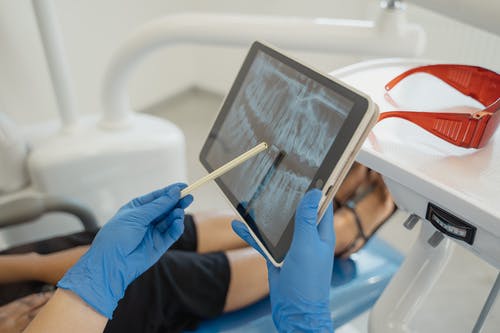
What Are the Differences Between Braces and Invisalign?
Braces straighten teeth. Some people do not want visible braces or can not because of dental health. They can use discreet Invisalign aligners instead of braces. Both braces and Invisalign improve teeth’s appearance.
The Primary Distinctions Between Braces and Invisalign
Braces and Invisalign are two teeth-straightening treatments. In terms of operation, they are very similar. However, there are significant differences between braces and Invisalign that can assist you in selecting the best treatment for your orthodontic needs. Some of these distinctions are discussed in greater detail below:
1. Price
Braces can cost between $2,500 and $8,500. The cost varies depending on how long it takes to straighten your teeth (two years), how many visits you need (typically 5-6 per year), and the type of braces you get.
Invisalign price is between $6,000 and $9,000 on average. This varies depending on the number of trays required throughout the treatment. Invisalign patients must wear their aligners for at least 20 hours per day.
2. How It Feels
Braces are metal wires attached to tooth brackets. These metal wires may hurt as the orthodontist tightens them. In contrast, Invisalign uses clear plastic trays. Replace trays every two weeks. Only the aligners in front or behind your tray may cause discomfort or pain. There are other ways to restore teeth functionality. Ask your dentist for recommendations.
3. Signs and Symptoms
When beginning orthodontic treatment, symptoms such as earache and sore teeth are common. This is due to the difference in craftsmanship between braces and Invisalign. Braces are attached to the front of the teeth, whereas Invisalign is attached to the back. Earache and tenderness are common symptoms for patients starting orthodontic treatment. Braces are applied to the front of your teeth, then connect these brackets to a wire that runs behind the tooth.
When you turn on the wire, you pull directly on the root of one’s teeth, causing pain in the ear canal. The wires in Invisalign are attached to the back of your teeth, preventing them from tugging directly on the root of your teeth. Orthodontic treatment often causes gum pain. Invisalign differs from braces. Braces hurt because metal brackets attach wires that pull on teeth roots. Invisalign uses a plastic material that is more comfortable and less likely to cause toothaches, which are common when starting orthodontic treatment. Click here to ask a professional.
4. Treatment Duration
The average time for braces treatment is 22-26 months. Braces are attached to teeth and take about 20 minutes to remove every few weeks. Invisalign treatment time is typically 9-15 months, but this can vary depending on your situation. It is not cemented into the teeth but instead placed in a series of removable aligners that are changed every few weeks.
5. Appearance
Another distinction between braces and Invisalign is their appearance. Traditional braces are visible when you smile or speak because they are made of metal wires attached to your teeth, in contrast to Invisalign’s clear plastic aligners, which are entirely invisible while worn. Even when you smile or speak, no one can tell you are wearing Invisalign unless they look very closely at your teeth. If you want your treatment to be as unobtrusive as possible, Invisalign may be the way to go.
6. Ease Of Eating
It is much easier to eat with Invisalign than with braces because it is a series of removable trays. This is because you can pull out your tray, take a bite of food, and then replace the tray to continue chewing. Because the trays are removable, you do not have to worry about them getting in the way of your food or drink, making meals more enjoyable.
7. Speech Difficulties
Patients who wear braces may occasionally have difficulty speaking clearly. Because the wires make pronunciation more complex, some consonants, such as P, B, T, D, and K, can become difficult to pronounce. Invisalign does not have this issue because the aligners are removable, and speech clarity is unaffected.
8. Disposal
Finally, you eat food while wearing Invisalign trays in front of or behind your current tray. When you are finished eating, replace the tray and enjoy a meal without interruptions. Removing braces takes a long time to install because your dentist must remove the entire attachment from your teeth. This is done if the desired appearance of your teeth has already been achieved or if you have specifically requested that braces be removed as treatment.
